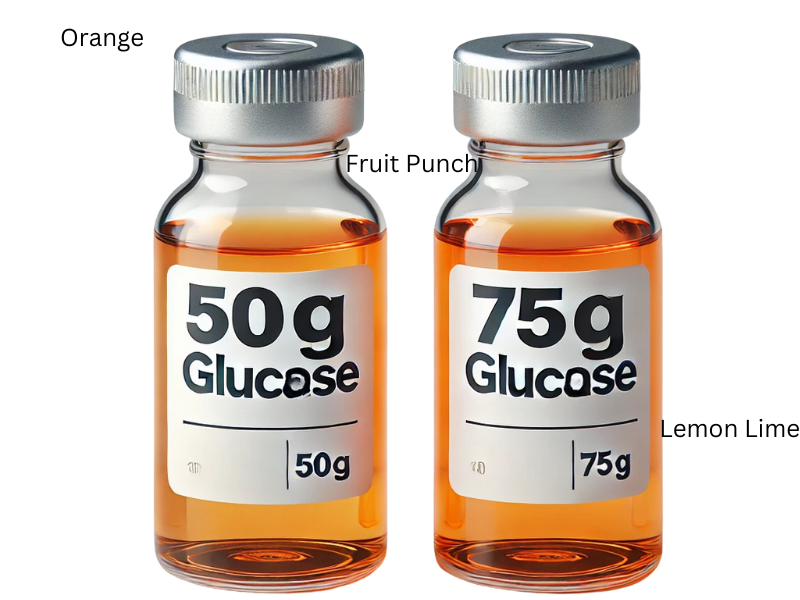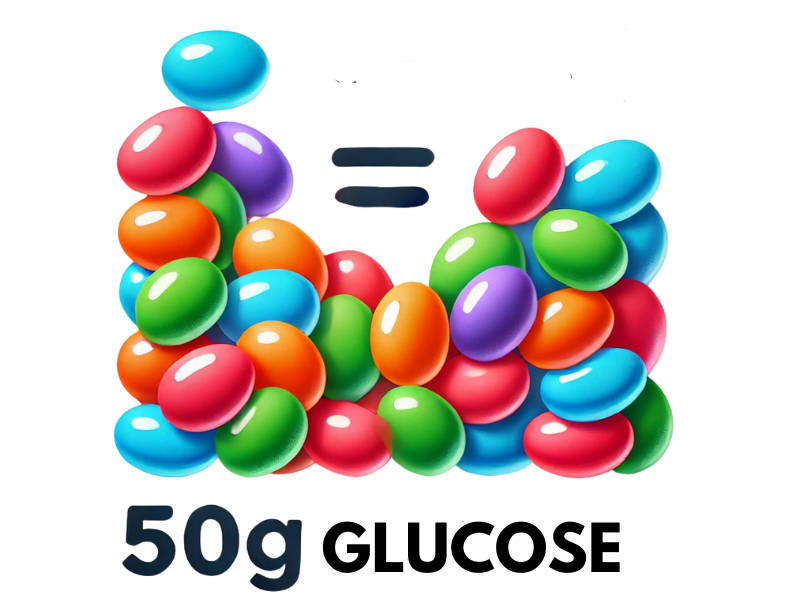

Pregnancy comes with plenty of milestones: hearing the heartbeat, feeling the first kick, and yes—drinking that infamous orange drink for your glucose test. While it might not be the highlight of your pregnancy journey, the glucose test plays an important role in keeping both you and your baby healthy. Let’s dive into what it is, why it’s done, and what to expect.
What Is the Glucose Test?
The glucose test, or glucose screening, is a routine test during pregnancy that checks how well your body processes sugar. It involves drinking a sugary solution and having your blood drawn to measure how your body responds. The goal is to screen for gestational diabetes, a condition where your blood sugar levels get too high during pregnancy. (Check out my post on Gestational Diabetes: https://montanaobgyn.com/understanding-gestational-diabetes/)
Why Is the Glucose Test Done?
Gestational diabetes doesn’t always come with obvious symptoms, but it can pose risks to both you and your baby if left unmanaged. Testing ensures that any potential issues are caught early. If gestational diabetes is diagnosed, it can usually be managed with dietary changes, exercise, and sometimes medication, keeping both you and your baby safe.
When Is the Glucose Test Done?
The glucose test typically happens between 24 and 28 weeks of pregnancy, when your body is more likely to show signs of glucose intolerance. If you have risk factors like a history of gestational diabetes, obesity, or a family history of diabetes, your healthcare provider might recommend testing earlier in your pregnancy. This test will be offered to you again at the 24-28 week mark if you pass the earlier one.
What Does the Test Involve?
- The Screening Test (Glucose Challenge Test aka GCT)
- You’ll drink a sugary beverage (often described as tasting like flat soda or melted popsicle) that contains 50 grams of glucose.
- After one hour, your blood will be drawn to measure your glucose levels.
- No fasting is required for this test.
- The Follow-Up Test (Glucose Tolerance Test aka GTT)
- If your screening test results are higher than normal, you’ll take a longer, more detailed test.
- You’ll fast overnight, drink a stronger glucose solution, and have your blood drawn at multiple intervals over three hours – fasting, 1 hour , 2 hours, and 3 hours after drinking the glucose solution).
Can You Do Jelly Beans Instead?
Good news: You might not have to endure the orange drink! Some providers allow alternatives, such as eating 28 jelly beans (the equivalent of 50 grams of glucose) for the screening test.
Is the Jelly Bean Alternative Validated for the Glucose Test?

Yes, the jelly bean alternative has been validated in some clinical studies as a substitute for the standard glucose drink, but it depends on your healthcare provider’s policies and preferences. The key requirement is consuming a precise amount of glucose—usually 28 jelly beans that contain 50 grams of glucose for the screening test.
Pros of Using Jelly Beans:
- Easier to consume for some people who dislike the taste of the glucose drink.
- Widely available and convenient.
Cons:
- Not all healthcare providers accept this option.
- Requires consistency in the brand and type of jelly beans used to ensure accurate glucose content.
Always consult your provider to determine whether this alternative is an option for you. While jelly beans might make the test more palatable, the accuracy of results remains the top priority.
- Always check with your provider first to see if this option is available.
Do the Jelly Beans all have to be the same color?
No, the jelly beans used as an alternative for the glucose test do not have to be all the same color, but they must meet specific requirements to ensure accuracy. Here are the key considerations:
Why Color Doesn’t Matter
- The glucose content in jelly beans depends on the brand and recipe, not the color. As long as the specific brand and type have been verified to contain the required amount of glucose (e.g., 50g for the screening test), the colors can vary.
What Does Matter
- Consistency in Brand and Type: The jelly beans must come from a brand with verified glucose content per jelly bean. For example, 28 jelly beans from Brand X that reliably provide 50g of glucose.
- Exact Quantity: The precise number of jelly beans needed must be consumed to match the glucose dose required by the test.
- No Sugar-Free Versions: Sugar-free jelly beans won’t provide the necessary glucose.
How to ensure the Jelly Beans you use meet the required Glu content:

To ensure that the jelly beans you use for a glucose test meet the required glucose content, follow these steps:
Before proceeding with jelly beans as an alternative, consult your healthcare provider. Ask if they approve this method and if they have specific brand recommendations.
2. Use a Verified Brand
Not all jelly beans are created equal. The brand you choose should have a known and consistent glucose content per jelly bean. For example:
- Some studies have used Brach’s Jelly Beans because their glucose content per piece is well-documented.
- Ensure the brand you select has been validated for use in medical glucose testing.
3. Verify Glucose Content Per Jelly Bean
Check the nutritional label of the jelly bean package to calculate the glucose content per piece:
- Look at the grams of sugar per serving.
- Divide the total sugar by the number of jelly beans in the serving to find the sugar content per piece.
- Ensure that the total number of jelly beans consumed equals 50g of glucose (or the required amount).
For example:
If a serving size of 10 jelly beans contains 20g of sugar, each jelly bean has 2g of sugar. You would need to consume 25 jelly beans to reach 50g of glucose.
4. Stick to the Required Quantity
Regardless of the colors, ensure you eat the exact number of jelly beans needed to match the glucose dose required (e.g., 50g or 75g).
5. Avoid Unverified or Sugar-Free Options
- Do not use sugar-free jelly beans, as they lack the required glucose content.
- Avoid brands without clear nutritional information or consistent glucose content.
6. Inform Your Provider
Let your healthcare provider know the brand and quantity of jelly beans you’re using. They may adjust their instructions or confirm that your choice is appropriate.
By following these steps, you can ensure that your jelly beans are both an enjoyable and accurate alternative to the glucose drink! Let me know if you’d like further clarification or support!
Other Alternatives to the Glucose Drink
If the drink isn’t your thing, other options may include:
- Consuming a specific amount of a sugary food or beverage (like fruit juice).
- Continuous glucose monitoring or tracking blood sugar levels at home over a few days.
However, these alternatives depend on your provider’s recommendations and the accuracy required.
What If You Fail the Test?

First, don’t panic—failing the screening test doesn’t mean you have gestational diabetes. About 15-25% of women who fail the first test go on to pass the follow-up glucose tolerance test.
If the follow-up test confirms gestational diabetes:
- Your healthcare provider will guide you on managing your blood sugar with a balanced diet, regular exercise, and potentially medication.
- Most women with gestational diabetes go on to have healthy pregnancies and babies.
Tips for the Glucose Test
- Eat a Balanced Meal Beforehand (if it’s not fasting): A meal with protein, fiber, and healthy fats can help stabilize your blood sugar.
- Stay Hydrated: Drinking water can make blood draws easier.
- Ask About Alternatives: If you’re dreading the drink, bring up options like jelly beans with your provider.
- Relax: Stress can affect your glucose levels, so take deep breaths and stay calm.
What Happens After Pregnancy?
Gestational diabetes typically resolves after delivery, but it’s a signal to watch your blood sugar in the future. Women who’ve had gestational diabetes are at a higher risk of developing type 2 diabetes later in life. Regular check-ups can help you stay ahead of any potential issues.
Learn More About Gestational Diabetes
Want to know more about what happens if you’re diagnosed with gestational diabetes? Check out my post on Gestational Diabetes: https://montanaobgyn.com/understanding-gestational-diabetes/ for tips on managing it, staying healthy, and ensuring the best outcomes for you and your baby.
The glucose test may not be your favorite part of pregnancy, but it’s an important step in protecting your health and your baby’s.
